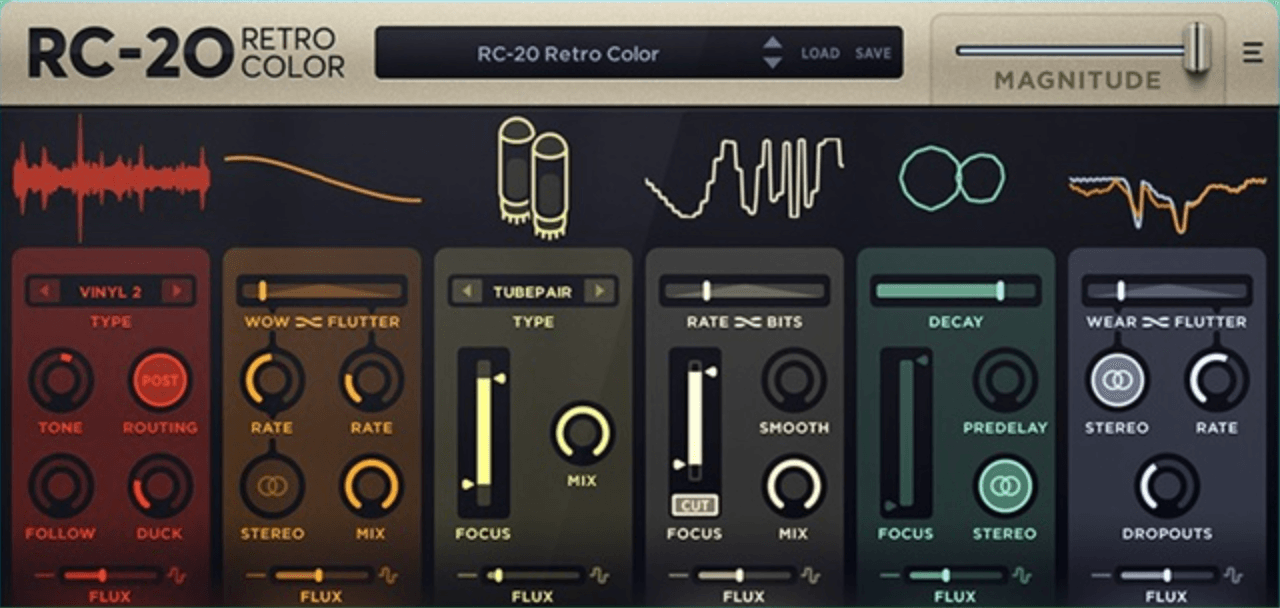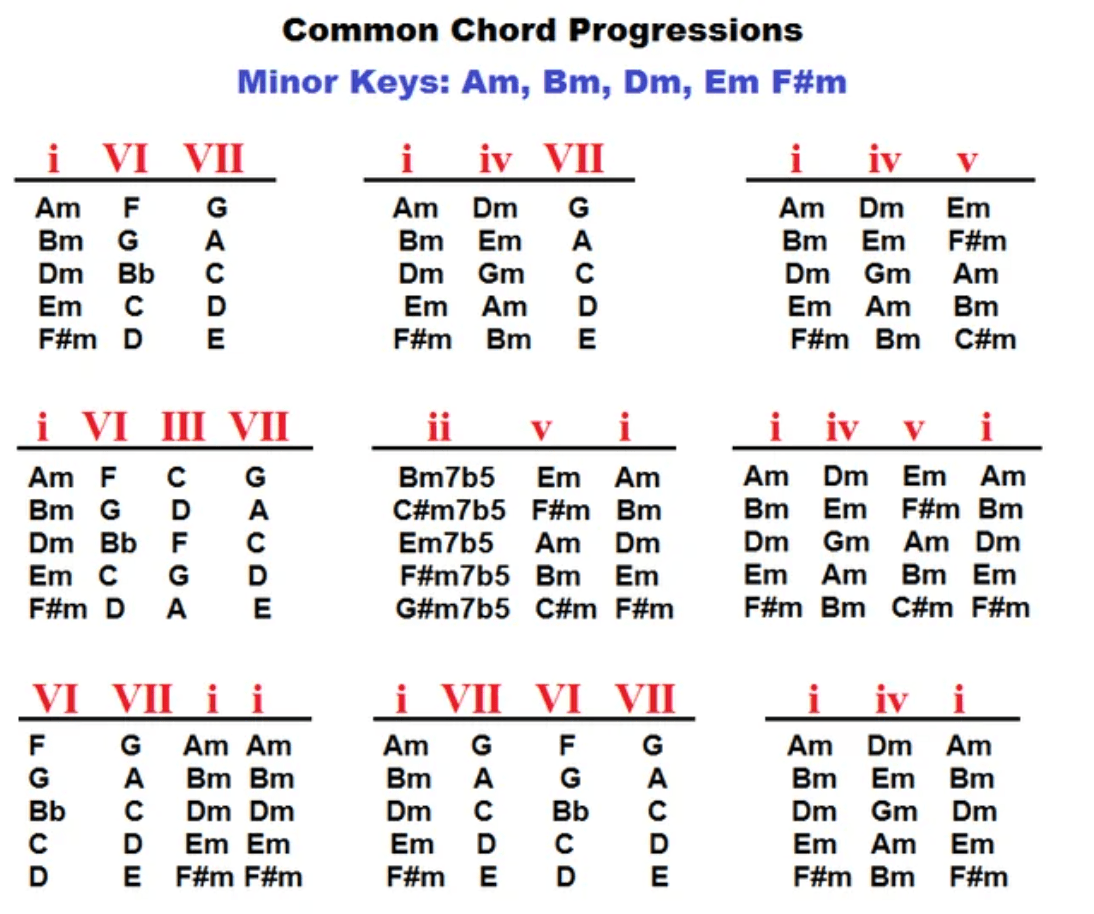Saturation in music production is like seasoning in cooking. Nobody enjoys a burnt steak or a mix that sounds like it’s coming through a fuzzed-out megaphone. But when used properly, saturation can bring warmth, richness, and a touch of character to your tracks, making them feel alive.
Saturation isn’t just a trendy buzzword; it’s a technique that’s been used for decades, dating back to the golden age of analog tape and tube gear. Today, we have powerful digital tools that let us recreate (and even enhance) that classic analog vibe.
In this guide, we’ll explore what saturation is, its various types, and how to use it to elevate your music. So, grab your coffee (or your mixing snack of choice), and let’s dive into the world of saturation!
What Is Saturation?
Saturation adds harmonic distortion to a signal, enriching the sound and giving it that extra “oomph.”
Originally, this happened naturally when engineers recorded audio through tape machines, tube amps, or analog consoles. The slight imperfections and overtones these devices added became a beloved part of the sound.
Saturation creates subtle (or not-so-subtle) harmonics by pushing audio signals to the point of gentle distortion. It can add warmth to a vocal, grit to a guitar, or punch to a drum loop. It’s the difference between a flat, lifeless track and something that feels vibrant and dynamic.
Harmonic Distortion: The Good Kind of Noise
When we talk about saturation, we’re really talking about adding harmonics and additional frequencies to the audio at a lower volume.
This isn’t the nasty noise you get from clipping your levels too high; it’s a musical, pleasing kind of distortion that adds depth and texture.
• Even Harmonics: Think warm and smooth, like a cozy blanket. These are common in tube saturation.
• Odd Harmonics: More aggressive and gritty, like the sound of a rock guitarist’s amp cranked to 11. Tape and transistor saturation often create these.
Types of Saturation
Not all saturation is created equal. Just as there are different shades of paint, there are different types of saturation, each with its own unique flavor and vibe. Let’s break them down:
1. Tape Saturation: The Vintage Charmer
Tape saturation is like slipping into a vintage leather jacket—it adds warmth, character, and a touch of nostalgia. This type of saturation emulates the way analog tape machines would naturally compress and distort audio. It’s subtle yet powerful, giving your sound a polished, professional quality.
• Characteristics:
• Smooth compression.
• Warm low-end.
• Subtle high-frequency roll-off.
• Best For: Drums, bass, vocals, or any track you want to glue together.
• Example Plugin: Softube Tape – An excellent choice for authentic tape warmth.
2. Tube Saturation: The Warm Hug
Tube saturation is the warm, analog sound you get from running audio through vacuum tubes. It’s rich, full, and musical, adding even harmonics that make your track feel alive. Imagine your music getting a warm hug—it’s that kind of vibe.
• Characteristics:
• Warm and smooth.
• Subtle harmonic enhancement.
• Best For: Vocals, guitars, synths, or anything you want to bring to life.
• Example Plugin: FabFilter Saturn 2 – A versatile plugin for tube saturation and more.
3. Transistor/Analog Saturation: The Rocker
Transistor saturation adds a touch of grit and edge, often associated with analog gear like consoles or solid-state amps. It’s a little rough around the edges but perfect for adding bite and character to your sound.
• Characteristics:
• Aggressive and edgy.
• Odd harmonics for grit.
• Best For: Guitars, drums, or anything that needs a bit of attitude.
• Example Plugin: RC-20 Retro Color – Great for adding retro analog vibes.

Benefits of Using Saturation
Saturation isn’t just about adding character—it’s about making your music feel better. Here are some of the magical things saturation can do:
1. Warmth and Depth
Digital recordings can sometimes sound a little too clean, almost clinical. Saturation introduces the warmth and depth of analog recordings, making your tracks more engaging.
• Metaphor: It’s like adding a cozy fireplace to a cold, modern living room.
2. Perceived Loudness
Saturation can make a mix feel louder without actually increasing the volume. By adding harmonics, it tricks the ear into hearing more energy and fullness.
• Metaphor: It’s like wearing heels—they don’t make you taller, but they sure make you feel taller.
3. Glueing Mix Elements Together
On a mix bus, saturation can act as a subtle adhesive, gluing elements together for a more cohesive sound.
• Metaphor: Think of it as the frosting that holds the layers of your cake together.
4. Enhancing Dynamics
Saturation can smooth out transients and add subtle compression, making your tracks more dynamic and punchy.
• Metaphor: It’s like polishing a diamond—each facet shines just a little brighter.
How to Apply Saturation
Now that you know what saturation is and why it’s awesome, let’s talk about how to use it effectively in your mixes. Spoiler: it’s not about slapping it on everything at 100%.
1. Subtle vs. Aggressive
Decide whether you want saturation to add subtle warmth or act as a bold effect. A gentle touch can enhance a vocal, while aggressive saturation can transform a snare into a crunchy beast.
• Tip: Start small! Dial it up until you hear it, then back off a bit.
2. Use It on Individual Tracks
Adding saturation to individual elements can make them pop. For example:
• Vocals: Add tube saturation for warmth and presence.
• Drums: Use tape saturation to make kicks punchier and snares snappier.
• Bass: Apply transistor saturation for grit and definition.
3. Saturation on the Mix Bus
On the mix bus, saturation can provide glue and polish. Use it sparingly to enhance cohesion without muddying your mix.
• Tip: Choose a plugin with built-in controls for output gain to ensure you’re not just making things louder.
4. Parallel Saturation
For more control, try parallel saturation—blend a heavily saturated copy of your track with the original signal. This way, you get the best of both worlds: character and clarity.
• Tip: Perfect for drums, vocals, or anything you want to stand out without losing dynamics.
Understanding Saturator Settings
To effectively use saturation, it’s important to understand the settings and controls that saturators typically offer. These parameters determine how saturation is applied and allow you to shape the sound to suit your mix.
1. Drive/Input
• What It Does: Controls how much signal is fed into the saturator. Increasing the drive intensifies the saturation, adding more harmonic distortion.
• How to Use It:
• For subtle warmth, keep the drive low (around 10–20%).
• For aggressive effects, push the drive higher (50% or more) but be cautious of distortion.
• Pro Tip: Automate the drive during dynamic sections (e.g., choruses) to add energy and excitement.
2. Output/Level
• What It Does: Balances the volume after saturation is applied. Saturation can increase perceived loudness, so use this to avoid clipping or overloading the mix.
• How to Use It:
• Match the output level to the bypassed signal to ensure you’re not just hearing a louder track.
• Pro Tip: Some saturators include an auto-gain feature—use it to save time when leveling.
3. Tone/Character
• What It Does: Adjusts the tonal balance of the saturation effect. Some saturators let you emphasize the low, mid, or high frequencies for specific character.
• How to Use It:
• Boost the lows for warmth and depth.
• Focus on the mids for richness and clarity.
• Enhance the highs for brightness and air.
• Pro Tip: For vocals, a slight emphasis on the high-mids can add presence and intimacy.
4. Type/Algorithm
• What It Does: Many saturators offer multiple saturation types (e.g., tape, tube, transistor) that emulate different analog devices.
• How to Use It:
• Use tape saturation for smooth, warm compression.
• Use tube saturation for rich, harmonic warmth.
• Use transistor saturation for grit and edge.
• Pro Tip: Experiment with different types to find the flavor that complements your track.
5. Mix/Blend
• What It Does: Balances the dry (unaltered) signal with the wet (saturated) signal. This control is essential for parallel processing.
• How to Use It:
• For subtle effects, blend the wet signal at 10–30%.
• For bolder sounds, increase the wet signal to 70% or more.
• Pro Tip: Use the mix knob for parallel saturation without the need for duplicate tracks.
6. Frequency Control (High/Low Pass Filters)
• What It Does: Some saturators allow you to target specific frequency ranges, applying saturation only to the highs, mids, or lows.
• How to Use It:
• Apply saturation to the low end for warm basslines and kicks.
• Focus on the mids to enhance vocals and guitars.
• Use on the highs for sparkle on synths or cymbals.
• Pro Tip: Use frequency controls to avoid saturating areas that could cause muddiness or harshness.
7. Harmonics
• What It Does: Controls the amount and type of harmonics (even or odd) generated by the saturator.
• How to Use It:
• For smooth and warm tones, emphasize even harmonics.
• For gritty and aggressive textures, add more odd harmonics.
• Pro Tip: Adjust harmonic content subtly to avoid overwhelming the natural character of the sound.
Understanding these settings allows you to fine-tune your saturation and tailor it to your track’s needs.
Practical Examples of Using Saturation
Saturation isn’t a one-size-fits-all effect. Different instruments and elements in your mix can benefit from specific approaches. Let’s explore how to apply saturation across various tracks.
1. Vocals: Adding Warmth and Presence
Vocals are the emotional centerpiece of most songs, and saturation can bring them to life. A touch of tube saturation adds warmth and richness, while tape saturation can smooth out dynamics and add polish.
• How to Do It:
• Use a subtle amount of saturation on the vocal track, just enough to add harmonic content without distorting.
• For pop or R&B, try parallel saturation to keep the original vocal clean while adding warmth in the background.
• Pro Tip: Automate saturation on choruses for extra energy and emotion.

2. Drums: Punch and Character
Saturation can make drums sound punchier and more cohesive. Tape saturation is perfect for taming harsh transients while adding body to the kick and snare.
• How to Do It:
• Apply tape saturation to the drum bus to glue the elements together.
• Add a touch of transistor saturation to individual hits, like the snare or kick, for extra punch.
• Pro Tip: Use parallel saturation to fatten up the room mics without overwhelming the mix.
3. Bass: Tightening the Low End
A bassline with subtle saturation feels more defined and powerful. By adding harmonic content, you make the bass more audible on smaller speakers.
• How to Do It:
• Use tube saturation for warmth or transistor saturation for grit and edge.
• Focus on even harmonics to keep the bass smooth and musical.
• Pro Tip: Roll off the low-end frequencies of the saturated signal to avoid muddiness.
4. Synths and Pads: Enhancing Texture
Synths and pads can benefit from saturation to add depth, warmth, or even a touch of vintage character.
• How to Do It:
• Add tape saturation to smooth out harsh high frequencies.
• Use tube saturation to make the synths feel lush and organic.
• Pro Tip: Combine saturation with reverb for a dreamy, expansive effect.
5. Master Bus: Glue and Warmth
Saturation on the master bus can subtly glue your mix together and give it that analog warmth we all crave.
• How to Do It:
• Use a tape saturator at low settings to gently compress and add harmonics.
• Focus on subtle enhancements rather than bold effects.
• Pro Tip: Always A/B your mix to ensure saturation is enhancing, not overpowering.
Advanced Techniques with Saturation
Once you’ve mastered the basics, it’s time to take saturation to the next level. Here are some advanced techniques to experiment with:
1. Multi-Band Saturation
Instead of applying saturation across the entire frequency spectrum, focus on specific bands. For example:
• Add warmth to the low end.
• Introduce grit to the mids.
• Enhance brightness in the highs.
Pro Tip: Multi-band saturation is perfect for mastering or when working with complex sounds like layered synths.
2. Automating Saturation
Saturation doesn’t have to be static. Automate it to increase intensity during choruses or drops, adding dynamic excitement to your track.
Pro Tip: Use automation creatively on synths or pads for evolving textures.
3. Combining Saturation Types
Why settle for one type of saturation when you can use several? Layer tape, tube, and transistor saturation to create a unique tonal blend.
Pro Tip: Use tape saturation for warmth, tube for richness, and transistor for bite.
4. Saturation as a Sound Design Tool
Push saturation to its limits for creative sound design. Extreme saturation can transform a simple sound into a gritty, distorted texture or a lo-fi masterpiece.
Pro Tip: Combine saturation with bitcrushing or modulation effects for even more sonic craziness.
Common Saturation Mistakes to Avoid
While saturation is a powerful tool, it’s easy to go overboard. Here are some common pitfalls and how to avoid them:
1. Over-Saturation
Too much saturation can make your mix muddy, harsh, or even unlistenable. It’s tempting to crank it up, but subtlety is often more effective.
• Solution: Start with a small amount of saturation and gradually increase it until you hear the desired effect. Less is more!
2. Ignoring Low-End Clutter
Saturating low frequencies can quickly lead to a boomy, muddy mix.
• Solution: Use EQ to clean up the low end before applying saturation, or focus saturation on the mids and highs.
3. Saturating Every Track
While saturation is versatile, applying it to every element can result in an overly dense mix.
• Solution: Be selective. Use saturation where it adds value and complements the overall mix.
4. Not Matching Levels
Saturation can increase perceived loudness, making it hard to judge whether it’s genuinely improving the sound or just making it louder.
• Solution: Always match output levels before and after applying saturation to ensure you’re hearing the effect accurately.
Recommended Plugins for Saturation
To get the best results, you need the right tools. Here are some of the top-rated saturation plugins you can use:
1. Softube Tape
• Why It’s Great: Authentic tape emulation with three distinct machine types.
• Perfect For: Warmth and glue on the mix bus.
2. FabFilter Saturn 2
• Why It’s Great: Incredibly versatile with multiple saturation types and modulation options.
• Perfect For: Everything from subtle warmth to aggressive distortion.
3. RC-20 Retro Color
• Why It’s Great: Adds vintage character with saturation, wobble, and noise.
• Perfect For: Lo-fi vibes and creative sound design.
Saturation is the unsung hero of music production. It’s the magic ingredient that adds warmth, depth, and character to your tracks, making them sound professional and engaging. Whether you’re going for subtle analog polish or gritty, distorted textures, saturation is a tool that can transform your mix.
The key to mastering saturation is experimentation.
Start with small adjustments, listen carefully, and don’t be afraid to push the boundaries. With the techniques and tools outlined in this guide, you’re ready to add some harmonic heat to your music.
Now, go forth and saturate your tracks into sonic perfection. And don’t forget—subtlety is sexy, but sometimes, a little boldness can steal the show!
Interested in learning more about music production? Check out our blog on compression!


